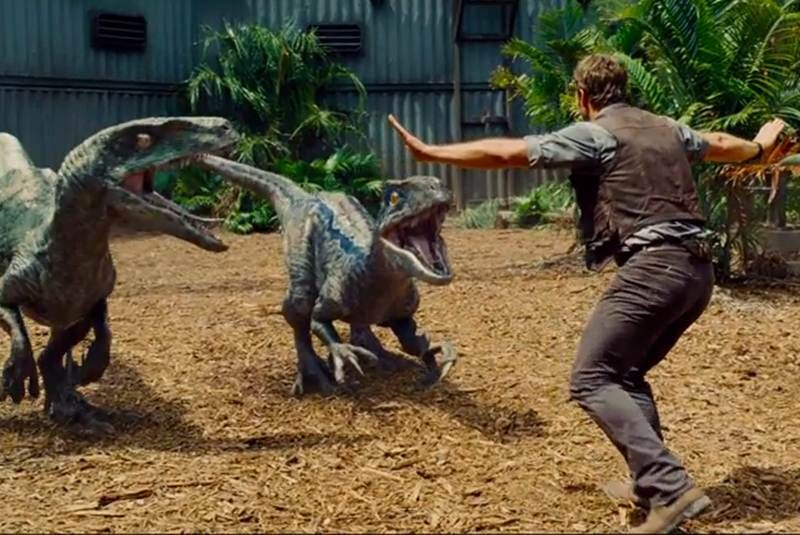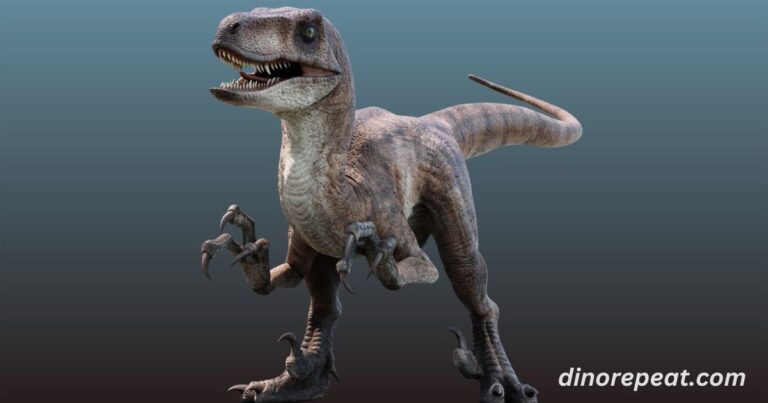
Since its release in 1993, Jurassic Park has left a lasting impact on how the world views dinosaurs—especially Velociraptors. These creatures were portrayed as cunning, fast, and deadly, cementing their place in pop culture.
But just how accurate is the movie’s depiction compared to the real Velociraptor known to paleontologists? Let’s break down the key differences and see where Hollywood took creative liberties.
1. Size and Appearance
In Jurassic Park, Velociraptors are depicted as large, menacing predators standing around 6 feet tall and stretching 12 feet long.
However, real Velociraptors were much smaller. Fossil evidence shows that they were only about 2 feet tall, 6-7 feet long, and weighed around 30-40 pounds—closer in size to a large turkey.

Another major difference is feathers. Real Velociraptors were feathered, as evidenced by fossilized quill knobs found on their forearms.
These feathers likely served for insulation or display, but the filmmakers opted for a more reptilian look, as feathers weren’t a well-established feature of dinosaurs in the early 90s.
2. Behavior and Hunting
In Jurassic Park, Velociraptors are shown hunting in packs, strategizing like wolves, and communicating with each other. In reality, there is no conclusive evidence that Velociraptors hunted in coordinated packs.
They were likely solitary or opportunistic hunters, and while they may have scavenged or occasionally hunted in groups, it was far less organized than in the movie.
The sickle-shaped claw on the Velociraptor’s foot, one of its most iconic features, was real, but it wasn’t likely used for slashing prey.
Instead, scientists believe Velociraptors used their claws to pin down prey, similar to modern birds of prey, rather than delivering lethal strikes as depicted in the film.
3. Intelligence
One of the most memorable aspects of Jurassic Park’s Velociraptors is their intelligence. They are portrayed as highly intelligent, problem-solving animals, even figuring out how to open doors.
While real Velociraptors were probably among the more intelligent dinosaurs, there is no evidence to suggest they had the level of cognitive ability shown in the film.

Their brains were relatively large for a dinosaur, but far from being capable of complex problem-solving.
4. The Real-Life Inspiration: Deinonychus
Interestingly, the Velociraptors in Jurassic Park are more closely modeled after Deinonychus, a larger species of dromaeosaurid, which stood about 5 feet tall and was a more accurate match for the size and fierceness of the movie’s raptors.
The choice to use the name Velociraptor instead of Deinonychus likely came down to marketing—the name Velociraptor was simply more striking and memorable.
5. Creative Liberty in Jurassic Park
So why did Jurassic Park exaggerate the Velociraptor? The answer lies in entertainment. Director Steven Spielberg and author Michael Crichton, who wrote the novel the film was based on, took creative liberties to enhance the excitement and terror of their story.
They needed a villainous dinosaur that could challenge humans, and a smaller, feathered Velociraptor wouldn’t have delivered the same cinematic effect.
At the time of the movie’s production, many of the more accurate discoveries about Velociraptors—such as their feathers—had not yet been made.
Paleontology is an ever-evolving field, and since the early 1990s, our understanding of dinosaurs has grown substantially.
6. The Legacy of Jurassic Park
Despite its scientific inaccuracies, Jurassic Park had a tremendous impact on public interest in paleontology. It popularized dinosaurs for a new generation, inspiring many to pursue careers in science.

While the movie’s Velociraptors may not be completely accurate, they succeeded in capturing the imagination of millions.
Conclusion
The Velociraptors in Jurassic Park are far from an accurate portrayal of their real-life counterparts. They are larger, scarier, and far more intelligent than the actual Velociraptors that lived millions of years ago.
Yet, these fictionalized versions have left a significant mark on pop culture and continue to be one of the most iconic creatures in cinematic history.
While we now know more about the real Velociraptors, there’s no denying the thrill and excitement that Jurassic Park brought to the screen. For more Velociraptor information check the dinorepeat.






